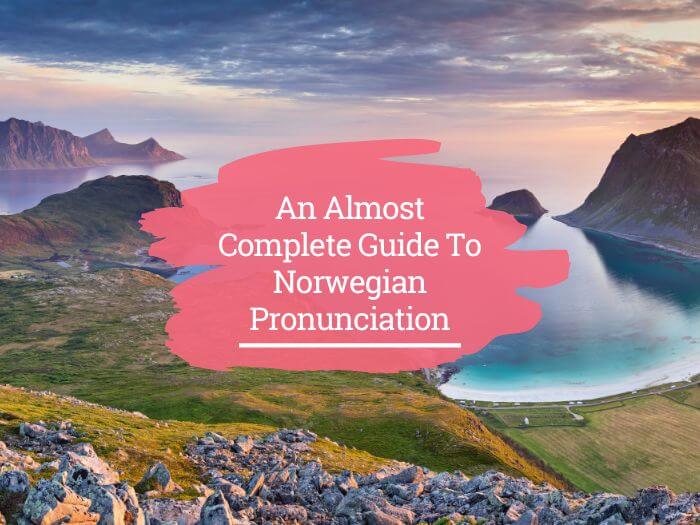Learn Norwegian: The Ultimate Guide For Beginners
As you're here reading this page, there's a high probability that you have thought about learning Norwegian. Congratulations.
You're on the verge of a wonderful, life changing experience that will not only transform your mindset, but also your entire physical brain.
Research has shown that learning a second (or third, or fourth) language from scratch literally changes your brain – for the better, obviously. It reshapes your mental map, creates more neurons and, when practiced regularly, strengthens your nervous system.
As a result, you will be able to concentrate better, experience a higher sense of creativity and enhance your language skills even in your mother tongue. For older second language learners, a delay in dementia and Alzheimer’s has also been noted.
But why exactly Norwegian, you might ask? This post aims to give you an answer through a comprehensive overview over the language, culture and history of Norway and its language.

Pro Tip
And by the way, if you’re thinking about learning Norwegian, then check out my course, Norwegian Uncovered.
Norwegian Uncovered is an online Norwegian course that helps you learn Norwegian through the powerful StoryLearning® method. I can guarantee you that it’s both fun and effective.
If you’re ready to get started, then click here to find out more and for a free 7-day trial of the course.
Here’s what we’ll cover in this article:
Table of Contents
If you’ve ever asked yourself any of these questions, then this article is for you. And if you want to skip ahead to different parts, just click the section that interests you.
I’ll start by going into some of the basics of Norwegian and Norwegian culture. I’ll also go into one of the biggest challenges in learning Norwegian – the spoken language. Lastly, I’ll finish off with some recommendations on how you can quickly and effectively learn Norwegian.
Why Learn Norwegian?
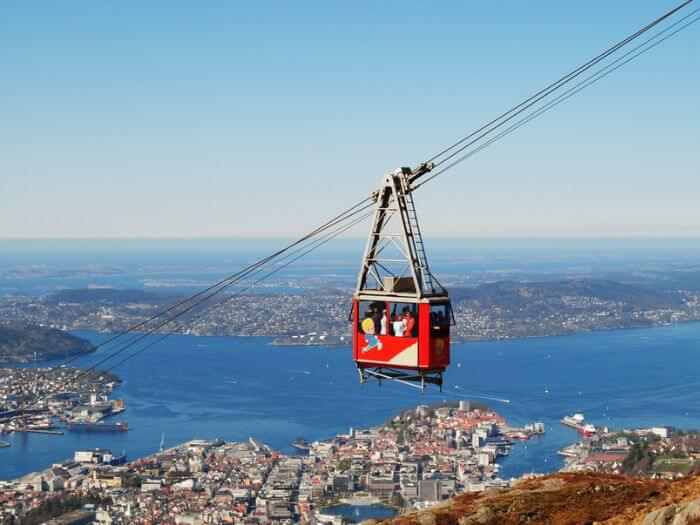
When we choose to learn another language in addition to our native tongue, we tend to pick among those we believe will be understood by as many people in the world as possible.
While at this moment 1.5 billion people sit down to learn English for exactly that reason, English language natives traditionally are drawn to Spanish, French, and quite recently even Chinese Mandarin.
You Can Learn Norwegian Fast
Nevertheless, Norwegian tops a not unimportant list of a different kind: it is one of the languages most English language speakers can learn the fastest.
The US Foreign Service Institute (FSI) has placed Norwegian in language category 1, giving an estimate of 24-30 weeks (600-750 hours) to learn the language.
That said, speed should obviously not be the sole factor when deciding on a new language to learn from scratch.
You'll have to bring enthusiasm, dedication and – most of all – a certain interest in the culture behind the language to the table, else the FSI’s estimate will become too generous, and you might struggle to move forward.
Still, the estimated speed of learning the Norwegian language can be encouraging when you're in doubt of your abilities. At least it might lead to tipping the balance when you consider learning a new language but can't decide which one.
If you're looking for a more substantial reason to learn Norwegian, you might want to consider one (or more, or all) of the following.

Learning Norwegian Might Be a Clever Career Move
Among professional translators is an unwritten rule: if you want to make a living in the job, you need to be fluent in a minimum of two major languages (English, Spanish, French etc.) and in at least one minor – such as Norwegian.
The reasoning behind the rule is that there are already many fluent speakers and high competition in the major languages. Though there will be a lot more in terms of job offers than in small languages, prices for translations are low.
Translators of minor (or complicated) languages, though not receiving as many jobs offers, will often earn between five up to even ten times as much for the same number of words. The trick is to balance big with small.
If translation isn't your thing, you might still be able to climb the career ladder faster with a language like Norwegian. While the language might be considered minor, Norway as a nation is anything but.
Internationally, Norway has a leading reputation in shipping, oil, marine biology and sustainable energy, to name only a few.
Even the finance world has woken up to Norwegian competence in the sector after the country sailed through most international recessions without as much as a blemish.
Regardless for what purpose you want to learn the language, placing Norwegian under the skills section on your CV will always make you stand out – even in Norway, provided you are a foreigner – and increase your chances on the job market.

Finding The Path To A Better Life
Few sit down and bother to learn another language with gusto just to subsequently go on a two-week holiday – where they can impress the waiters by ordering from the menu in the local language. In most circumstances, the waiter speaks English, anyhow.
Learning a new language also means learning a new culture and many will consider moving, at least for a short time, to the country they have chosen to learn the language from.
Until now, the Southern European regions belonged to the most cherished destinations for most future expats.
Yet as climate change is redefining the characterization of “good weather”, the thought of never-ending heat waves, severe droughts and high energy bills due to extensive use of air conditioning even in summer start hitting home.
New goals are on the cards, and Norway might just be the place.
The country, together with its Nordic neighbours Sweden, Denmark, Iceland and Finland, regularly can be found among the top 10 of the happiest countries in the world.
A satisfying work-life balance, good health care and political stability play a major part in the equation.
Cooler weather, a measured amount of rain and winters with proper snow that doesn't transform a landscape into a slushy mess might soon be added to the prospective expats’ wish lists.
In addition comes an incredible landscape incorporating mountains and the sea in equal picturesque measures – and a GDP (Gross Domestic Product) per capita of around $106.000, making the UK’s $46.000 look like… peanuts.
Now tell me, who doesn't want to live in Norway? But it pays to learn the language first.
One Language To Rule Them All

“Are all Scandinavians able to communicate with each other in their own language?” is one of the eternal questions there seems to be no concrete answer to.
The resolve is obviously to a large extent dependant on the abilities – and the willingness to be heard and understood – of the individual speaker and listener.
In 2020, the Nordic Council, a transnational body financed by the governments of Sweden, Denmark, Norway, Finland and Iceland, made an effort to get to the bottom of the answer to the question.
The subsequent report, based on research among young Nordic citizens, showed that of all the languages in the territory, Norwegian was the most likely to be understood by Swedes, Danes, Fins and Icelanders alike.
80% of the Swedish, 67% of the Danish, 45% of the Icelandic and 22% of the Finnish respondents felt confident to understand Norwegian without having specifically learned the language.
The figures drop substantially when it comes to Swedish and Danish, the languages most closely related to Norwegian.
However, even here the Norwegians score higher, being able to understand 90% of the Swedish and 50% of the Danish content of a conversation.
The reason for the Norwegians’ flexibility is ascribed to their historical and geographical ‘advantages’ within Scandinavia (though the Norwegians might beg to differ with regards to historical advantages).
Norway was ruled for centuries by the Danes and had been force-fed the Danish language, at least in writing, throughout that very long period (1380 – 1814).
It further shares a 1.630 km (1.010 mi) long border with the Swedes, leading to countless encounters over the centuries.
In short, by choosing Norwegian, foreign language speakers receive an easier access to the other ‘main’ Scandinavian languages. Especially reading Danish and Swedish texts and literature will come almost automatically, even for beginners.
And suddenly you won’t only have access to somewhat over 5 million, but almost 28 million people who just might be able to understand you – and you them.
If you're still uncertain and seek an even longer – and more detailed – list of reasons on why to learn Norwegian, take a look at my post Why Learn Norwegian? 11 Surprising Reasons to Learn Norwegian.
The History Of Norwegian

Norwegian, like English, is part of the Germanic language family. This means, it shares not only a certain amount of its vocabulary with English, but also features with regards to grammar and sentence structure.
Despite being deceptively called Germanic, the language group actually had its origin in iron-age (ca. 750 BCE) Scandinavia and the Baltic. As the population spread across Europe, new dialects developed out of this Proto-Germanic group to become languages in their own right, one of them Old Norse.
Old Norse
Known as the Viking language, Old Norse – or Norrønt – was an unwelcome feature on especially Northern European coastlines.
Yet despite being connected to a particularly unpleasant tribe of marauders, Old Norse could not fail to make an impact on the native languages.
Old Norse remained in use in Norway throughout the entire Viking-period, but with the events of 1066 and the subsequent Christianisation of Scandinavia too, both international politics and languages changed forever.
In 1349, the arrival of the Black Death wiped out a third of the Norwegian population and forced a weakened Norway into a union with Denmark that lasted for centuries.
As a result, Danish became the official written language in Norway while the spoken dialects varied from region to region in the country.
Modern Norwegian
The history of modern Norwegian – if there is one singular such thing – is relatively new in a global context as it first began with the dissolution of the union with Denmark in 1814.
Though the Danish language stayed prevalent in written form throughout most of the 19th century, Norwegian intellectuals were set to distinguish the country’s culture from that of its Scandinavian neighbours (and former rulers) by defining not one, but two Norwegian standards which still are in use today.

Bokmål
As Norwegian goes, this is the most used standard in the population.
Almost 90% of Norwegians speak and write Bokmål, though it was close to ending up being called Dano-Norwegian (dansk-norsk) when the Norwegian parliament in 1929 voted 17 (dansk-norsk) to 18 (bokmål) for the universal name of the language.
Bokmål has its origin in Danish but has undergone a substantial ‘Norwegianification’ throughout the last two centuries.
Like most languages, Bokmål is still developing and changing with the times. To begin with, Bokmål was called Riksmål (transl. National language).
And there are still proponents of this ‘clean’, but rather strict and rigid written standard, most notably represented in the conservative Norwegian newspaper Aftenposten and the Riksmålsforbundet.
Nynorsk
While Danish as the written main language was forced upon the Norwegians for centuries through the Union, various dialects formed independently from each other and the country’s urban elite, especially in rural Norway.
In the 1840s, Ivar Aasen (1813-1896), a native of a small village in Western Norway, started collecting the vocabulary of the dialects in the Norwegian countryside.
By 1853, out of this collection he had shaped a completely new language which he called Landsmålet (the country’s language).
Landsmålet was quickly accepted by schools especially in the Western part of Norway and was re-christened Nynorsk by the Norwegian parliament in 1929.
Today, Nynorsk remains an official Norwegian language on par with Bokmål, though only approximately 15% of the population, mostly situated in Western Norway, use it in everyday life.
Sámi
While Nynorsk is widespread in Western Norway, some Northern Norwegian counties have accepted the language of the indigenous Nordic nomads, the Sámi, as a third official Norwegian language.
Sámi itself consists of several dialects that often differ widely from each other, and the Norwegian government uses Northern Sámi in those counties.
Sámi is spoken by less than 1% of the population and has very little, if anything, in common with Norwegian, Swedish or Danish.
It belongs to the Uralic language group, which is dominated by Hungarian, Finnish and the languages from the Baltic countries.
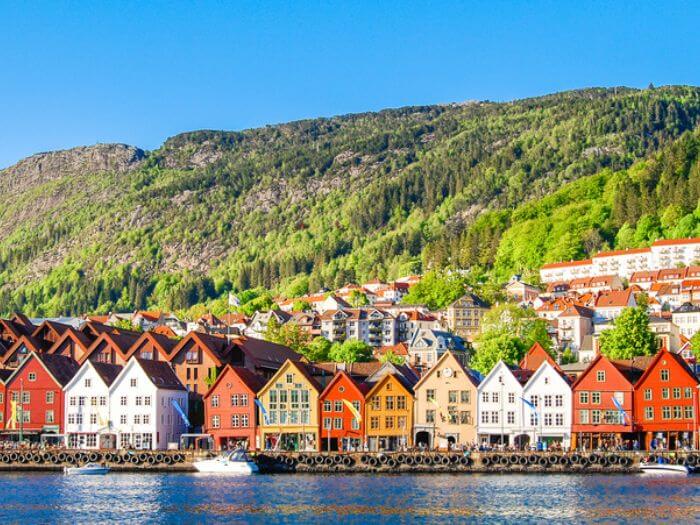
But Who Speaks Norwegian?
In a global context, not an awful lot of people speak Norwegian. Around 5.5 million people live in Norway in 2023, and it can be safely assumed that most of them are more or less capable of speaking the language.
In addition, the more than 200.000 Norwegian immigrants arriving in the US during the 19th century nowadays have more than 1.2 million descendants with singular Norwegian roots – increasing to over 4.5 million when a mixed heritage is taken into account.
The 2000 US census determined that more than 55.000 US Norwegians still spoke the language, though it is a more archaic form that has moved into an entirely different direction linguistically.
What's probably more surprising is that almost 50.000 Norwegians currently make Spain their home, elevating the nation into the third biggest Norwegian speaking country in the world, followed by Sweden, which is home to 40.000 Norwegians.
Due to the Nordic countries (Norway, Sweden, Denmark, Iceland and Finland) operating a common labour market, citizens of these countries can move freely and without further bureaucracy around the region to live and work.
By the way, if you'd like to know more about the origins of Norwegian, where it's spoken, its linguistic features and more, check out the video below.
Key Linguistic Features Of Norwegian
As already mentioned, Norwegian belongs to the same language group as English and both therefore share quite a few commonalities.
There are, however, also many features left that might seem odd – if not incomprehensible – to begin with when you first start out learning Norwegian.
Three Genders – And Where To Place The Articles
Despite coming from the same language group, English and Norwegian still have a few differences, among them the ‘gender issue’. Norwegian, like for example German, uses three genders: en (male), ei (female) and et (neutral).
For native English language speakers, it might seem odd that et hus (a house) is neutral, while ei bok (a book) is female and a chair (en stol) male, but there are a few pointers making the assignation of genders to nouns in Norwegian easier.
- Living beings always receive the article corresponding to their sex, for example en gutt (a boy), ei jente (a girl), en skuespiller (an actor), ei skuespillerinne (an actress), en okse (a bull), ei ku (a cow).
- Norwegian nouns ending in –het, -sjon or –else are always male.
- Norwegian words ending in –inne and –ing are usually female. As –inne is mostly assigned to female performers of a profession, this becomes self-explanatory.
- Words ending in –ment, –em, –gram, –um and –skap are mostly neutral, unless the root of the word originally came from a foreign language.
Though these rules might give you some relief as you try to increase your vocabulary, the vast majority of nouns don't fall into these categories, and you will have to pay attention to the article whenever you pick up a new noun.
It's worth mentioning, that even Norwegians in their everyday use of the language can't be bothered with all three genders anymore.
In recent years, the feminine form has increasingly merged with the male, and nobody will bat an eyelid if you say en jente mister en bok på trappen (a girl drops a book on the stairs) instead of ei jente mister ei bok på trappa.
The placement of the articles relating to the noun might be confusing for beginners.
Where we in English differentiate between “the” and “a(n)”, the Norwegian will move the articles from the front to the back of the word as in en mann – mannen (a man – the man), ei kvinne – kvinna (a woman – the woman) and et barn – barnet (a child – the child)
If you have more than one and the noun becomes plural, the articles turn into -(e)r and –ene and are again added to the end of the word: hunder – hundene (some dogs – the dogs), jenter – jentene (some girls – the girls) and bilder – bildene (some pictures – the pictures).

Irregularities Among Even The Regular Norwegian Verbs
As if it wasn't bad enough having to learn irregular verbs in any language, Norwegian offers the added disadvantage of four groups within the regular verbs that all conjugate differently when you move around the tenses.
The conjugation will depend on the root of the word, and you can find the specific groups – and which verbs fall under what – in my post with 10 Tips to Get a Grip on Basic Norwegian Grammar.
In addition, Norwegian has a collection of approximately 150 irregular verbs, each one with its own conjugation. This is, however, very few compared to, for example, French where the number of irregular verbs is well above 300.
While all of this might sound terribly confusing and quite probably like hard work, once you’ve started learning the language conjugation will make perfect sense.
This is especially the case if you learn Norwegian with the StoryLearning method because it will give you an immediate context, thanks to stories.
After only a very short time, you'll already detect which verb belongs to a certain group by only looking at it – and perform the conjugation automatically.
Besides, Norwegian verbs – disregarding if they are regular or irregular, don't conjugate in their own tense. Unlike English language learners, who have to rattle off “I am”, “You are”, “He/She/It is”, you can stick to Jeg er, Du er, Han/Hun/Det er etc.
Norwegian Prepositions Don’t Know You Speak English
Prepositions in any language are a tricky business. Though short and unassuming in sentences, prepositions represent to some the most challenging part of any language.
Not only do they hardly ever translate in a straightforward way, but often they don't even make sense. Are you “in a plane” or “on a plane”? And why is the shop open “during” the day and not “in”?
To make matters worse for English speakers, Norwegians commonly use the prepositions til and for which sound (and look) very close to our “till” (until) and “for” – but are not necessarily used the same way:
- I have a gift for you – Jeg har en gave til deg
- I wore red (in order) to be seen – Jeg brukte rødt for å bli sett
The Norwegian til usually describes movements within space or time, while for mainly involves an intention and can best be translated with the English “in order to”.
If it's of any comfort, even native Norwegians in some circumstances can have doubts. And the number of questions regarding the difference between til and for to the guardians of the correct use of the Norwegian language, the Riksmålsforbundet, speaks volumes.

The Alphabet No Longer Runs From A To Z
While most languages deriving from the Indo-Germanic group list the alphabet from A to Z, Norwegians (and Danish) will run it from A to Å. The last three letters, æ, ø and å add a further three vowels to a, e, i, o and u, with y becoming a ninth.
Ironically, what we regard as ‘typical’ Scandinavian letters, æ and ø, actually originated from Latin.
Yet while most of the other European languages with Latin roots removed the letters entirely, or replaced them with Ä and Ö, they stuck in some Nordic countries.
The letter Å (or å) is a more recent addition to the Norwegian alphabet. It was added in 1917 from the German – which does not use the letter any longer – to replace the writing style ‘aa’. While most call it an ‘A with a circle’, the circle in truth represents a second a.
Despite the Norwegian alphabet being a whole 3 letters longer, the practical use of the language leaves out 5 letters: c, q, w, x and z.
These will never be part of any indigenous Norwegian word but can appear in foreign expressions taken into the language, like cinematek, quinoa, watt, xylofon or zenbuddhisme.
What Do I Need To Know About Norwegian Culture?
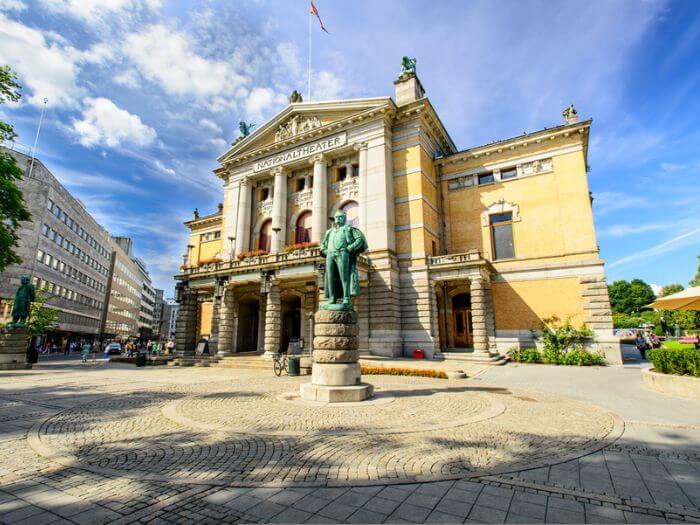
Placed within a wondrous and grandiose fairy-tale landscape, it’s no wonder that outdoor activities and a close relationship to nature are at the core of the most important aspects in Norwegian culture.
Throughout the ages, Norway has developed a vibrant oral storytelling culture where trolls, ogres and fairies came to life on long winter evenings in front of the fireplaces.
The country still maintains part of this tradition with festivals and workshops around the country.
Oral storytelling also had an impact on Norwegian folk music as music was often used to illustrate or liven up the tales.
The traditional Norwegian folk dances called Bygdedans or Runddans were among the cultural heritage taken by Norwegian emigrants to the USA where they still are performed in certain places. In the 20th century Runddans were re-named Gammeldans as part of a common Nordic dance tradition.
Norway’s geographical advantages nurture quite a few expected – and some unexpected – talents in a variety of Norwegian sectors important for everyday life.
Norwegian Sports

Training in Norway starts early on. Already pre-school age children, will, in many circumstances go to outdoor nurseries even – sometimes especially – in the cold winter months.
Handling water, snow and ice thereby becomes a part of normality and not something to hide from. Norwegians know how to dress warm and will forego any fashion sense without regrets in order to avoid hypothermia.
With such an early start, Norway has produced many successful winter sports athletes over the decades and the medal count at the Winter Olympics speaks volumes.
The ease of handling snow and inclement weather conditions once enabled Norwegian resistance fighters against the German occupation in World War II not only to outwit, but also to outrun the Nazis by fleeing the country over the mountains on skis.
Norway’s countless mountains, called fjell, also offer the perfect training ground for aspiring mountaineers, among them the internationally renowned Norwegian philosophers Arne Næss (1912 – 2009) and Peter Wessel Zapffe (1899 – 1990).
Arne Næss’ nephew and namesake carried on the family tradition of mountaineering – before making international headlines as the second ex-husband of singer Diana Ross.
Norway’s coastline, islands included, measures a respectable 102.936 km (63.961 mi). With so much access to water, sailing has become a favourite Norwegian pastime with many internationally renowned Norwegian champions.
Many Norwegians will go on a quick ski trip after work, or on the ice rink or somewhere onto the water, unless its frozen.
Sport is very much part of everyday life in Norway.
Norwegian Music

A-ha, some might think when the conversation for one reason or the other should touch on Norwegian music.
Others, more classical inclined, will start humming ‘Solveig’s sang’ from the opera ‘Peer Gynt’ by Norwegian composer Edvard Grieg (1843-1907) – but only until they reach the complicated scales.
Yet Norway’s biggest music export has little in common with the cutesy synth-pop of ‘Take on Me’ or the traditional Norwegian folk tale set to music by Grieg. It comes from a far darker corner of Norwegian society.
Since the 1980s, Norway has developed a popular Heavy Metal scene that soon branched out into the genres of Death Metal, Black Metal etc.
While generally regarded as a little noticeable sub-culture to begin with, things took a darker turn in the 1990s when suddenly churches started to burn, graveyards were desecrated, and anti-Christian propaganda seemed to spread like wildfire – culminating in two grisly murders.
The Satanists were in town, ready to take on the world.
With band names like ‘Mayhem’, ‘Darkthrone’ or ‘Hellish Outcast’ and lyrics that made the Rolling Stones ‘Sympathy for the Devil’ sound like a nursery rhyme, Death Metal became a major Norwegian cultural export, prompting the Foreign Office of Norway to train their diplomats in the subject.
Since 2010, metal bands can regularly be found among the hopefuls in the Norwegian selection round for the Eurovision Song Contest.
Norwegian Literature
Unlike other European nations, Norway has little to show for in terms of literature during the renaissance, baroque and enlightenment periods.
The Danish domination of language and culture in the country is mostly to blame for that.
And even the classical sagas of the Heimskringla, written about the Viking period and set in Norway, are universally ascribed to the Icelandic poet Snorri Sturluson (1179 – 1241).
But in the 19th century, after the union with Denmark was dissolved, Norway stepped up and into the romantic period, starting with – like almost everyone everywhere else – a collection of Norwegian folktales assembled by Peter Christian Asbjørnsen (1812 – 1885) and Jørgen Engebretsen Moe (1813 – 1882).
Inspired by those fairy tales but moving Norwegian literature into the Modern Age with his take on social injustice (The Pillars of Society, 1877), feminism (A Doll’s House, 1879) and political awakening (An Enemy of the People, 1882) was the true heavyweight of the country’s culture, author and playwright Henrik Ibsen (1828 – 1906).
In the 20th century, Norwegian writers Bjørnstjerne Bjørnson (1832 – 1910), Knut Hamsun (1859 – 1952) and Sigrid Undset (1882 – 1949) came to great international acclaim when they each won the Nobel Prize in Literature in 1903, 1920 and 1928 respectively.
More recently, in 2023, Norwegian author and playwright Jon Olav Fosse also won the prestigious prize.
It’s probably also worth mentioning that one of the greatest British children's books authors ever, Roald Dahl, was of Norwegian origin.
Yet in the last 20 years, Norwegian literature has really picked up speed outside the country’s borders too with the arrival and international acclaim of Nordic Noir.
Norwegian writers like Jo Nesbø, Karin Fossum and Anne Holt have sold millions of books on the international market – and some of them became millionaires in the process.
The success of Nordic Noir has also aided other Norwegian writers outside the genre, like Åsne Seierstad (The Bookseller of Kabul) and Karl Ove Knausgård (My Struggle)
With a population of just over 5 million, prospective Norwegian writers would find it very difficult to make a living in their chosen profession – despite a quarter of the population picking up a book to read every day.
In these circumstances, many authors would decide to write in English to reach a larger audience and market, which is why the Norwegian government steps in.
To preserve Norwegian culture – and support Norwegian writers so that they can continue writing in their native tongue – the government will buy a certain number of books every year to be distributed around libraries.
There are also several grants and stipends in place to be accessed by the writers directly.
Norwegian Film

Like literature, Norwegian film only has access to a limited audience, and with movies costing approximately $ 3 million per piece, the sector heavily relies on financial support from the state’s coffers.
The Norwegian Film Institute (Norsk Film Institute) annually receives €66 million from the taxpayer to distribute within the trade.
In recent years, also streaming operators like Netflix and Amazon Prime have provided some welcome additional funding.
And the Nordic Film & Television Fund (Nordisk Film & TV Fund) – a transnational backer for the entire Nordic region with a budget of €14 million – will top up a film’s finance when the national film boards have agreed to invest in a movie.
The Nordic Noir genre spread from book to screen and among the most successful Norwegian contributions to the genre are:
- Occupied (Netflix)
- Wisting (Amazon Prime)
- Ragnarok (Netflix)
- Mammon (Amazon Prime)
- and the ever-popular Lilyhammer (Netflix) which provides laughs and thrills in equal measures through almost continuous re-runs since 2012.
Actress Liv Ullmann (Persona) and actor Kristofer Hivju (Game of Thrones) are the most visible Norwegian exports to the international film industry while film director Morten Tyldum (The Imitation Game, Passengers) holds the flag for Norwegian talent behind the camera in Hollywood.
Norwegian Art
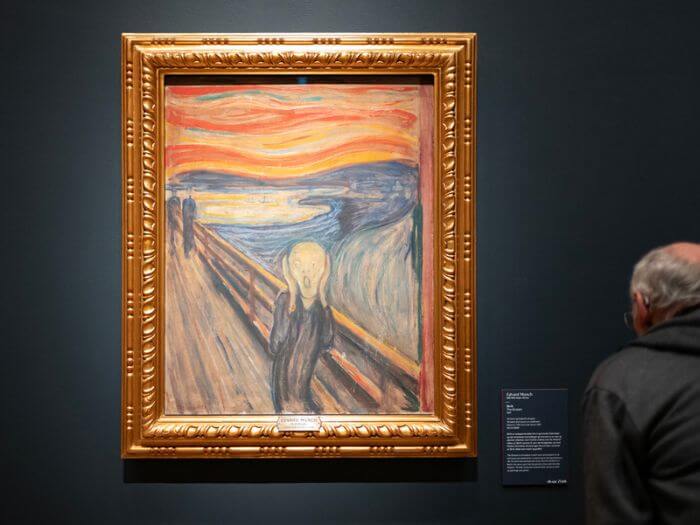
For ordinary mortals outside the art scene and Norway's borders, Norwegian art begins – and sadly ends – with one artist, or rather one singular painting: ‘The Scream’ (Skriket).
What few are aware of is that Edvard Munch’s iconic masterpiece is not just one, but two paintings (1893 & 1910) in addition to two pastel drawings (1893 & 1895) – and is therefore called ‘a composition’ rather than ‘a’ painting.
Both ‘The Scream’ paintings were in 1994 and 2004 respectively stolen under spectacular circumstances – one involving a ladder, the other a gun – from two different Oslo museums, but both were subsequently recovered.
In 2012, one of the two drawings came into the spotlight when it had been auctioned off for a respectable $119.9 million..
While Edvard Munch (1863 – 1944) remains the most internationally recognized Norwegian artist, his contemporary Gustav Vigeland (1869 – 1943) is the most visible, especially when you pay a visit to Oslo.
In 1921, the sculptor made a deal with the council to leave all his artwork to the city after his death, which then still was called Kristiania, in return for being provided with an atelier.
The result is Vigelandsparken, an installation of more than 200 sculptures by Gustav Vigeland in addition to a museum in his former atelier.
Norway’s internationally most acclaimed contemporary artist – though he prefers not to be called as such – is Odd Nerdrum (b. 1944).
Often sparking controversies, as in 1978 when his painting ‘The Murder of Andreas Baader’ presented the well-known German terrorist as a martyr, and involved in scandals, as in 2012 when he was sentenced to prison for not telling the Norwegian tax authorities about a certain bank box in Austria, Nerdrum still is the most represented artist in international – and Norwegian – museums.
In 1998, he created the ‘Kitsch-movement’ that since has received not only widespread attention, but also an international following.
Less imposing than Munch, Vigeland and Nerdrum, but more accessible – and affordable – is Norway’s vibrant Arts-and-Crafts movement.
Members of the arts and crafts scene are invited every year to submit their best pieces for evaluation at the prestigious Årsutstillingen (The Annual Exhibition), held each autumn in a different Norwegian city.
Årsutstillingen has become a major Norwegian event with extensive newspaper coverage, substantial audience figures and far more submissions from Norwegian artists than the limited space could possibly handle.
Is Norwegian Hard To Learn?
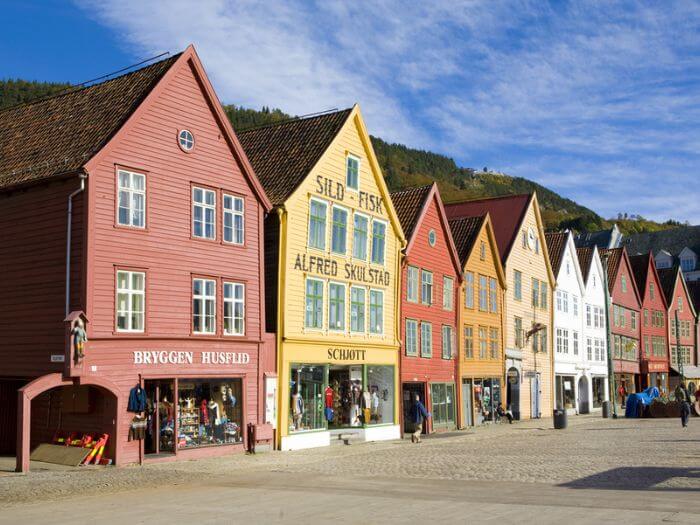
Is Norwegian hard to learn? No, is the short and succinct answer. As already mentioned above, Norwegian is considered by the FSI (US Foreign Service Institute) as one of the easiest languages for English language speakers to learn.
Yet as with most short, succinct answers, it comes with a but…
The expression ‘hard to learn’ is obviously relative and will be based on the individual experience of a foreign language learner.
An English speaker who has never ever dipped into the pool of foreign languages will probably experience any first attempt as hard – but let me promise you as languages go, Norwegian is one of the best to begin with.
Likewise, if you already speak another language before you start thinking of adding Norwegian, you’ll find it a treat compared to other, more complex European languages.
Here are some of the reasons:
You Unknowingly Speak Some Norwegian Already
English as we know it today has, like many other languages, developed over time. And whoever has passed through the British isles – from Celts to Romans and Anglo-Saxons to Normans – have left their mark on the language.
Also many words, originally uttered by Vikings as they burned down villages or stole another set of slaves, still remain part of the English language as it is spoken today.
Some examples from Old Norse that still are found in English are:
bag – baggi; cake – kaka; to hit – hitta; ill – illr; law – lagu; muck – myki; skin – skinn; ugly – uggligr
to name only a (very) few.
While Norwegian in time also moved away from Old Norse to become a language in its own right, there are still quite a lot of words that both languages share.
Some have even maintained the same spelling, though with a different pronunciation, such as arm, egg, glass, hare, like, sand etc.
Others, like råtten (rotten), vind (wind) or bok (book) might have a slightly different spelling but are pronounced the same way you would in English.

It Also Works The Other Way Around
While half of Europe has left its mark on English, anglicisation in its turn is a current global phenomenon where English words and idioms become natural parts of another language.
Also Norwegian is susceptible to anglicisation, especially since broadcasting, streaming and the film industry in the country don't dub their programming – unless it is aimed at children – but leave it in the original language with subtitles.
As with many other languages, most notably in France and Iceland, the increase of English words in Norwegian vocabulary is controversial and under frequent debate.
However, Norwegians to a certain extent have found a clever compromise by borrowing words from English but giving them a Norwegian twist:
- gang becomes gjeng
- straight now is streit
- crash is krasj
- and the also frequently used in Norway “all right”, “cool” and “it sucks” are spelled ålreit, kul and det suger respectively.
The Norwegian Language Council has released a kind of wishlist on how they would like certain English words to be replaced by a Norwegian equivalent already present in the language.
In the meantime, idioms like “go with the flow”, “get a life”, “down to business” or “just great” have become almost as normal in Norwegian as they are in English.
Norwegian Syntax Hardly Differs From English
When you learn Norwegian, building your own sentences is exciting as well as daunting in equal measures.
Full sentences are the building blocks of communication and unless you're in the military, single word shout-outs will hardly get you anywhere fast while talking to another.
When you first start out in Norwegian, you will begin with simple sentences. You’ll immediately discover with relief that Norwegian, like English, follows the basic SVO (Subject-Verb-Object) sentence structure:
- Han kjøper brød (He buys bread)
If you want to make it more interesting or specific, you will add an adjective:
- Han kjøper grovt brød (He buys brown bread)
Then you will become more confident and add an adverb:
- Han kjøper grovt brød idag (He buys brown bread today).
And when you feel truly adventurous, you might expand to:
- Han kjøper grovt brød idag fordi hans kone ba ham om det (He buys brown bread today because his wife asked him to).
As you can see, Norwegian sentences mirror their English equivalent word for word. But when you move something else than a subject to the very beginning of a sentence, things change a bit.
- Idag kjøper han brød (Today he buys bread)
As you might have noticed, he (han) and buy (kjøper) have swapped places. The Norwegian language applies the V2 (verb second) rule, meaning the verb will always remain in second position in a sentence and the corresponding subject will be moved behind.
As this is universally applied, it’s fairly easy to remember and shouldn't lead to nervous breakdowns whenever you move your words around the sentences.
Norwegians Don’t Go Overboard With Metaphors (And Neither Should You)
If countries were to choose national mottos, ‘Less is more’ probably would be the one most appropriate to apply to Norway.
From Norwegian architecture and design to engineering and inventions (Norway’s biggest contribution to the world of invention is a cheese cutter called ostehøvel), you’ll find that form will always follow function – with decorations way down the line.
While minimalism might be an international fashion trend, it will always remain a survival tactic in countries with harsh environments such as Norway.
The Norwegian language mirrors this practical, restrained approach and saying a lot with as few words as possible is a common thread in literature.
When Nordic Noir took it’s turn around the world, critics soon pointed out the sparse use of metaphors as a common factor among the Norwegian writers.
A study of Nordic Noir points out that writers in the genre are more likely to use plain descriptions of landscapes, people and circumstances to replace the use of metaphors and still get their point across.
Norwegians are plain spoken. Using long sentences, a lot of metaphors or extensive elaborations goes against the grain of the practical use of the language.
The Norwegian vocabulary lies with approximately 300.000 words well below the English of 500.000. Quite interestingly, this includes a long list of different Norwegian words for snow, for which there are no English equivalents.
It’s a question of priorities. Knowing your snow can save your life in the mountains. Finding another way to say you’ve had a bad day at work – does not.
For a Norwegian language learner, this will make life easy. Not only will you have fewer words to learn, but you'll also find it refreshingly comfortable not having to look out for how to say something differently when the simple and obvious version will do.
How Can I Get To Grips With Spoken Norwegian?
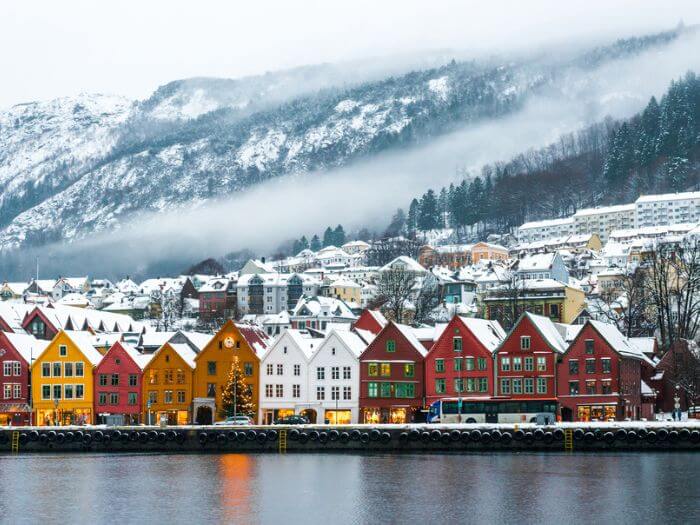
If you ask this question to a native Norwegian, he or she would probably laugh and ask you to tell them the solution once you’ve figured it out – as also they might want to try it. The truth is, there are no rules on how to speak Norwegian.
The country’s public broadcaster NRK (Norsk Rikskringkasting) tried for a time to establish – quite like the BBC in the UK – a consensus on how spoken Bokmål should sound and trained their presenters and commentators accordingly.
Nowadays, their website tells anyone looking for pronunciation advice that “…Nobody owns the (Norwegian) language and its development takes place through discussion and engagement.”
The Norwegian Language Council (Norsk Språkrådet), which sets and guards the standards for Norwegian grammar and spelling, points out that there are no official rules for pronunciation in Norwegian like there are for spelling and inflection.
They recognise all established pronunciation variants, such as dialects, sociolects, etc., as equal and no speech variety is considered more correct or better than others.
The Norwegian Freedom Of Pronunciation Act
When this is said, there are a few principles in this “freedom of pronunciation act” the Norwegian Language Council would like you to consider and adhere to.
- The Principle of Equality: All forms within established speech varieties are equal and acceptable. The clue here lies in ‘established’ – meaning you are free to choose from the collection of already present ways of pronunciation but can’t make up your own and hope you’ll get away with it.
- The Orthophony (the art of correct articulation) Principle: Within standard language pronunciation, the Norwegian Language Council generally favours written pronunciation – in short, speak it as you read it. This one might sound straightforward to begin with, until you realise that a Norwegian native will have a completely different understanding of how a written word sounds like than an English language speaker. More about this below.
- The Consistency Principle: A general piece of advice from the council is to be consistent within the variant you use. If you have picked a certain pronunciation, you’ll have to stick with it throughout your entire conversation. Performing a mix-and-match of for example Nynorsk and Bokmål or several dialects is not on the cards.
- The Principle of Tradition: Pronunciation methods that have been established through widespread use over a certain period of time are considered acceptable. This one first becomes interesting when you have already achieved a sense of the Norwegian language and a certain notion of how things should be pronounced. Sometimes you will come across words, especially in connection with the names of peoples and places, where you are sure you know how it’s said, but soon will be told otherwise by a Norwegian native. Examples would be the city of Trondheim. While you might have learned that ‘ei’ is pronounced like a ‘y’ in try (lei seg – being sad), it is here in fact pronounced closer to Tron-yem as in Yemen. And despite training your ‘ch’s for the first letter k (but not the second) in kirke (church), you’ll learn that philosopher Kierkegaard is pronounced with a hard ‘k’ equivalent to the English ‘c’ in complete.
While you will learn these special cases as you go along, it pays to give a special attention to the ‘pronounce it as you read it’ principle.
Say It As It Seems?

With the increasing anglicisation of languages worldwide, English speakers often forget that their native tongue in its turn has been heavily influenced by other languages.
Most words ending in –ment, for example, derive from the French – including department, arrangement or compliment – which again borrowed the root from Latin.
When a word initially was taken over from French, Norwegians, in most circumstances, will give the French pronunciation preference.
The ending –ment henceforth sounds closer to –mang (as in mango) when pronounced in Norwegian to honour the French origin.
Also imports from other languages, such as German (besserwisser – know-it-all) or Italian (bajas – clown) will always be spoken the way a German or Italian would pronounce it.
More interesting still will be the issue of ‘speak it as you read it’ when you come across some seemingly unusual letter combination, such as kj, skj, sj and tj.
Seemingly Crazy Letter Combinations in Norwegian
Before you sit down and twist your tongue by trying to pronounce kj, skj, sj and tj. the way you would in English – only because the Norwegian Language Council and the NRK say you could – keep in mind that Norwegian initially was meant for Norwegians, for whom these sounds are completely natural and an essential part of the cultural heritage – without any reference to English or any other language.
Here are a few (cautious) guidelines on how to adapt them for pronunciation in an English mind.
Kj: We are already getting off to a bad start, for this sound has no English equivalent. The closest you come to pronouncing it is by softening your ‘ch’, as in check or chocolate. You’ll find it in kjæresten min (my boy-/girlfriend), å kjøre (drive), kjølig (cold).
Sj/Skj: This sound lies close to the English ‘sh’ in sharp or shuffle. It’s a frequent combination of letters and a regular sound to be found in for example sjøen (the sea), å sjekke (to check), sjelden (rarely), skjorta (the shirt), å skje (to happen), skjevt (lopsided).
Tj: Pronounced like ‘kj’, with a hint of a ‘t’ as in witch or watch. Less common than the others but appears in words like tjenesten (the service), å tjafse (to gossip), tjue (twenty).
These guidelines are only approximate and should help you to get started. As you progress, you will find sources, as for example one or several ‘real’ Norwegians and get a more distinct ear on how it really should sound.
At the same time, you will also increasingly discover that not all letters are what they seem in Norwegian.
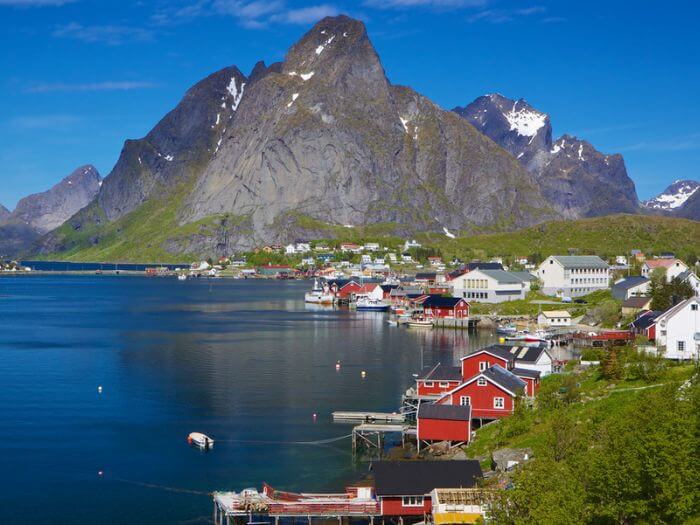
When An O Is No Longer An O
While the unusual letter combinations and the exotic æ, ø and å already tell you well in advance that you must be careful with regards to pronunciation, other, more unassuming letters have a few tricks up their sleeves as well.
Reading the Norwegian alphabet out loud can soon take you into a topsy-turvy world and away from the security that an ‘O’ after all is only an ‘O’.
The English o becomes a Norwegian å, while the Norwegian o really is pronounced like the British oo and sometimes a u. A Norwegian j transforms into an English y and a d at the end of a Norwegian word often completely disappears – as does the h in the beginning of certain words.
The Norwegian University of Science and Technology (NTNU) has collected a list of the most common discrepancies between the English and the Norwegian language together with the appropriate sound files on how it really should sound in Norway.
However, while this seems like a lot to take on board, once you have started to learn Norwegian it quickly falls into place as the pronunciations is largely consistent and – as you know by now – there are no strict rules you break if you should get it wrong to begin with.
As a beginner learner, you should be far more aware of some more serious pitfalls, especially when you look out for shortcuts to ‘learn’ Norwegian faster.
Pitfalls To Keep In Mind When Starting To Learn Norwegian

Whenever people who speak more languages than just their mother tongue meet, they will inevitably at some point compare notes on their experiences on getting there.
In most circumstances, there appears the story of the unsuspecting language newbie who is taught a long list of swearwords by a mischievous native speaker, believing the newly acquired vocabulary to be everyday expressions of the more polite kind.
With the advent of Artificial Intelligence and translation apps, urban legends like this story will become short in supply, one would think. You are taught a word and immediately look it up on your phone to see if it is right.
That’s not necessarily a good thing – and in many circumstances you will find that automatic translation creates some pitfalls you were not expecting.
(Machine) Translation Is Not Your Friend
Most of us who learn foreign languages do so to be able to communicate with others. What few consider is, that language only is one part of communication.
Mimicry, gestures, tone of voice and interaction as a whole are equally important to get a message across.
Sarcasm, bluffs, internal jokes, even gentle declarations of love and dislike which we easily pick up by looking at our partner(s) in conversation, will often pass by translation software.
Machine translation isn't aware of something like context. At its base, it has a collection of words in various languages to which it adds grammar rules as applied in the country.
That one word in one language can have several meanings in another usually doesn't fall into the equation.
The result is a grammatically correct, but stiff sounding text without any literary qualities. In some circumstances, it even might get it completely wrong.
Take this sentence from Knut Hamsun’s ‘Sult’ (Hunger, 1890)
- Jeg var like på nippet til å gråte av sorg over endnu å være ilive.
- Machine translation (DeepL): I was on the verge of crying with grief at not even being alive.
- Official translation: I was on the verge of crying with grief at still being alive.
Not bad, you might think – until you realise as a human that there still is a slight difference between being barely alive and completely dead.
At best, machine translation will give you a word-by-word translation of a text without nuances or intended stimulations. Even though it knows what it is, machines as yet lack a real sense of humour.
At worst, machine translation will prevent you from making friends and deprive you of many comical situations where you stamp your feet, wildly wave your hands and give your face expressions warranting an Oscar nomination just to make someone from another country understand that you are in need of the bathroom (in Norwegian: Kan du si meg hvor toalettet er? – just in case).
Besides, are you more likely to remember the difference between left and right by reading it on your phone – or by someone pointing you in the direction while saying til venstre (to the left) or til høyre (to the right)?
Since Everybody Speaks English Anyhow, Why Bother?

So here you are. You have learned your fair share of vocabulary, and have revised and practiced and read whatever Norwegian you could get hold of.
You are, in short, fully prepared for your first encounter in Norwegian with a genuine Norwegian. But before you know it, your carefully planned Norwegian conversation is taking a sinister turn back in to English again.
Among all the pitfalls, trying to speak Norwegian with a Norwegian might just be the most difficult to overcome – for various reasons.
According to the EF English Proficiency Index (EF EPI), Norway ranks worldwide amongst the countries with the highest English language skills in the general population.
So foreigners moving to Norway can't often see the need for learning the local language because they can have completely normal English conversations wherever they go in the country.
However, while you might be proud to have learned Norwegian to a certain level – the Norwegian you are speaking to might be just as proud of his or her English language capabilities. A conflict of interest is about to unfold.
The fact that Norwegians inevitably will speak English with English language natives, even though they might have been approached in Norwegian, has nothing to do with lack of patience or contempt for the other’s Norwegian language abilities.
Norwegians are just not used to people outside their borders being interested in learning such a small language. In situations like these, you might want to learn the following sentences which circumvents the language dilemma:
Unnskyld, men jeg er nødt til å lære meg norsk. Kan du være så snill å hjelpe meg med det? (Excuse me, but I really need to learn Norwegian. Could you please help me with that?)
The clue lies in the second sentence. Above all – even over showing off their English language skills – Norwegians like to be helpful. It’s basic psychology – cheap but cheerful and very effective.
Asking someone for help to learn Norwegian will prevent any further attempts to lead a conversation in English. In some circumstances, you might have made a friend for life.
Which Norwegian Pronunciation Should I Choose?
If you're among those who are lucky enough to have a circle of Norwegian friends – and you choose to learn the language to participate in their conversations – you'll soon bump up against the pronunciation issue.
Your friends will quite possibly come from all over Norway, and each and all of them will have their own ideas of how Norwegian should be pronounced.
Norwegians are traditionally proud of their heritage. The dialect they have learned in their childhood will remain with them for the rest of their lives.
For Norwegian language beginners trying to practice their verbal skills, this becomes a crucible of willpower.
- Is it the Nynorsk-speaker from Western Norway who seems to throw in an ‘a’ at the end of every other word who holds the key to Norwegian?
- Or is the friend from Northern Norway the true Norwegian language champion by seemingly swallowing his vowels here and there?
- And what about the friends from Kristiansand in the South, or Trondheim, or the housing estate in Oslo who each display their very specific linguistic peculiarities?
To begin with, you will pick up bits and pieces of all these different pronunciations. You will, in short, break most of the few rules as set out by the Norwegian Language Council mentioned above.
However, as you progress in your language course, you will increasingly notice your own mix-and-mismatch and adjust accordingly to end up with a more consistent pronunciation. And it will all come quite naturally.
What’s The Best Way To Become Fluent In Norwegian?

Being ‘fluent’ in any language is a somewhat fluid expression as the definition is based on individual demands and expectations.
- Are you fluent in Norwegian when you have managed to make yourself perfectly understood with a native?
- Or do you first have to make sure that every sentence you speak is following exactly the rules as set out by the Norwegian Language Council or the even stricter Riksmålsforbundet?
The answer lies obviously in your own definition.
Less fluid, however, is the expectation that ‘fluent in Norwegian’ involves the act of talking in the language in some form or the other.
Most beginners in a new language feel shy at the start to the point of dreading to open their mouth and speak the first few, hard-earned words in their vocabulary.
The fear villain takes over and you're afraid of sounding ridiculous and making a fool of yourself.
As yet, I have never seen anyone anywhere breaking down in laughter because another person is attempting to speak their language and does so incorrectly. Quite to the contrary – and it’s no different in Norway.
At worst, you might not be understood on your first attempt – whether you spoke too timidly, or actually pronounced something wrong.
The most common reaction in Norway would be that you will be asked to repeat it:
- Unnskyld, men jeg forstår ikke. Kan du gjenta det? (Excuse me, but I don’t understand? Can you repeat this?) or
- Beklager, men jeg forstår ikke. Kan du si det igjen/en gang til? (I’m sorry, but I don’t understand. Could you say it again/one more time?)
This is often followed by the excuse that an (imaginary) airplane must have passed, or the (non-existent) music was too loud.
Norwegians, like many well-grounded, down-to-earth people, are usually perceptive to the discomfort of others and will make it easy for you to comfortably repeat yourself.
At best, you are immediately understood and are at the beginning of a beautiful new friendship.
Until you are able to speak, however, you also need to acquire the words to say, and here are a few pointers on how to get there.
1. Enroll In Norwegian Uncovered To Learn The Fundamentals (And More!)
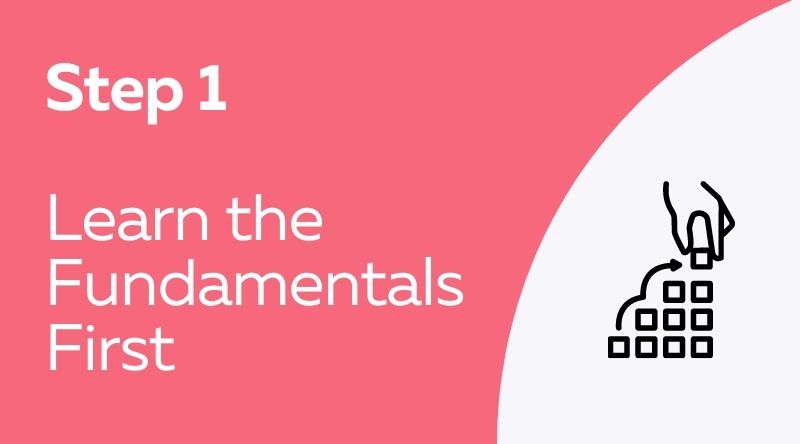
All of this seems possibly easier said than done and you still might wonder how to begin with even the basic vocabulary – never mind phrases and, well, grammar… This is where my course Norwegian Uncovered will lend you a helping hand.
Not only will I teach you the fundamentals of the Norwegian language, but also gently ease you into using what you have learned in a practical context – without hammering you with terminology.
My StoryLearning technique aims to make language learning not only fun, but also useful in that you will wire your brain into thinking in full sentences and phrases rather than just rattling off single words.
Once you have established a framework on how and where to begin, you can sit down and take control over the rest of your own learning process.
2. Set Short And Long-Term Goals
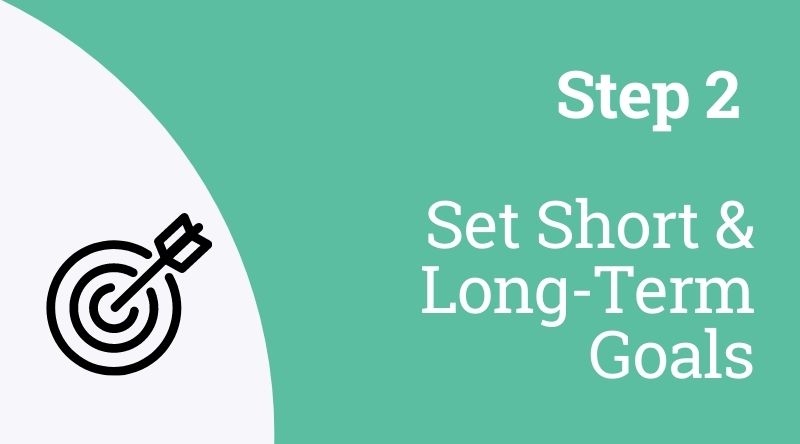
Once you have the framework in place and have made yourself familiar with the course, you can start setting your personal goals. You are the master of your own time and know best how much of it you can invest every day or week to learn Norwegian.
Some of the most important issues to consider when setting your goals are your reason to learn the Norwegian language, your expectations and the time you have available outside of the demands of everyday life.
Someone learning Norwegian for the sheer fun of it will always have different goals than a person who expects to move to Norway for business or family reasons.
Be realistic when you set your goals. Learning a new language is exciting and life-changing, but also needs work and dedication.
If you set your goals too high, you can soon feel overwhelmed and come into real danger of giving up. This can have a severe effect on your self-confidence and might even prevent you from making further attempts to learn a new language.
Setting your goals too low might give you a sense of slow-going, but at least you can adjust for a slightly steeper learning curve.
In order to reach your Norwegian language learning goals, whether they be short- or long-term, it's important to find the time and make space in your life.
Learning the language with the help of stories will be fun and inspirational, but as with ‘common’ books you read – you will have to find peace and quiet to concentrate. You'll also soon find that you have to practice to stay on top of it all.
3. Learn Norwegian Phrases
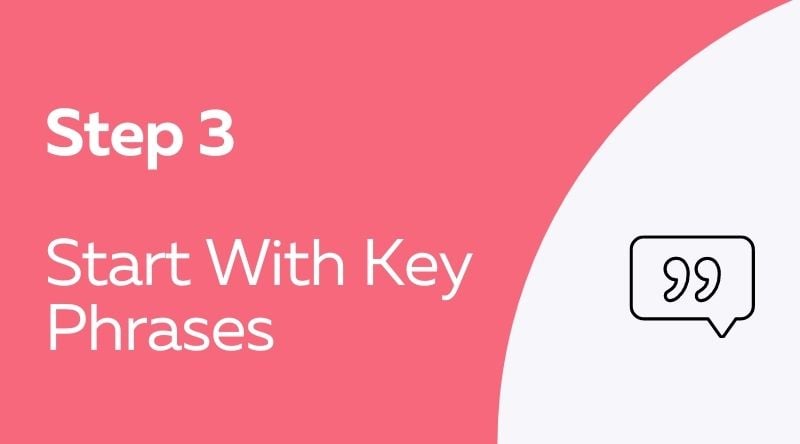
If you ever learned a second language at school, you were no doubt regularly sent home with a list of words you had to memorise before the next lesson.
Two weeks later came the dreaded test – and you realised that you’ve forgotten at least half, if not all of them.
Learning single words without context is hard enough – in addition to being incredibly boring. Remembering them all becomes an impossible task.
Take for example:
- Noun: en mann (a man); mannen (the man); flere menn (many men); mennene (the men)
- Irregular verb: å stå (to stand); jeg står (I stand); sto (stood); har stått (have stood)
- Adjective: sterk (strong), sterkere (stronger); sterkest (strongest)
- Adverb: alene (alone); mer alene (more alone); mest alene (most alone)
It seems all a straightforward, uncomplicated and even with an irregular verb thrown in for good measure. It’s also tedious and thus difficult to remember for next time when you might need it.
However:
Den sterkeste mann i verden, det er han som står mest alene. (The strongest man in the world is he who stands most alone; Henrik Ibsen, An Enemy of the People)
doesn't only give poignancy and food for thought, but also context – and thereby meaning – to the individual words.
Nobody expects you to plough through Ibsen at the beginning of your Norwegian language journey, but you can start off with some of the easier, everyday expressions which I have collected for you in 96 Common Norwegian Phrases to Survive Your First Conversation with a Native.
4. Don’t Get Hung Up On Grammar
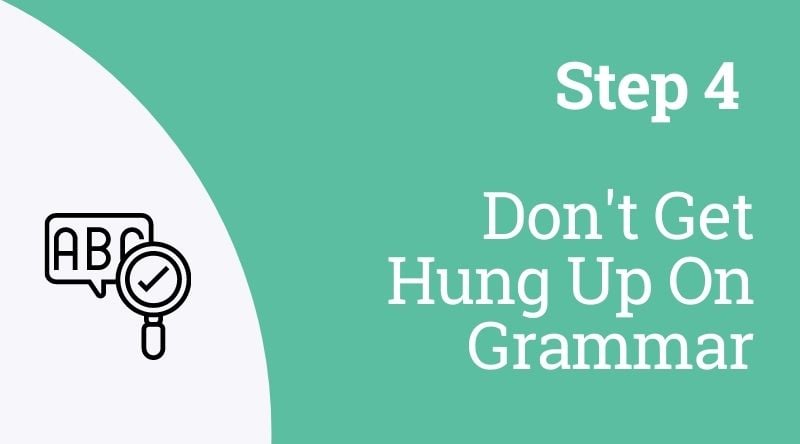
As soon as terms like syntax, conjugation, regular and irregular verbs or tenses become part of the ball game, most of us will just want to hide behind the bench and decline to take that pass.
Yet we make a practical use of this terminology in grammar every single time when we strike up a conversation, read a book or even when we only sit down somewhere and daydream.
Once the terminology is removed, grammar becomes a natural part of the language learning process, especially in connection with learning Norwegian.
As a rule of thumb: if you have the words, just say them in exactly the same order in Norwegian as you would in English. In most circumstances, you will be absolutely fine.
If you are a complex thinker with complicated sentence structures, you might run into problems here and there – then again, you'll probably also run into the same problems when speaking English or any other mother tongue.
Norwegians are essentially pragmatic people and don’t look too favourable on overly long explanations or elaborations anyhow. Keep it short and to the point and you’ll get far in Norway.
5. Find Norwegian Speakers To Talk With
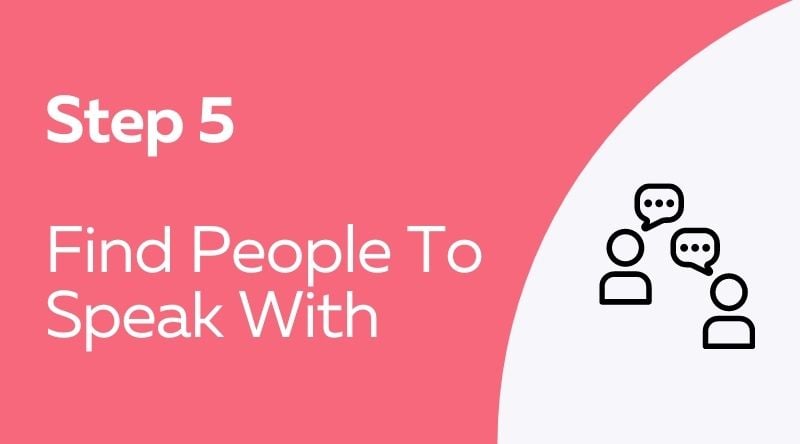
Nobody is better suited for a Norwegian language practice run than a ‘real-life’ Norwegian. The problem, you might think, is how to get hold of one. Luckily in the digital age, Norwegians are usually closer at hand than you think.
Online you will find a vast array of forums and communities specifically aimed at Norwegian language speakers and learners. There you will not only get any eventual questions answered, but also have the unique opportunity to meet Norwegian natives.
If you have other hobbies besides learning Norwegian, you might want to go to forums related to this pastime and look out for Norwegian sounding names. Your hobby will give you a common ground right from the start and make first contact less awkward.
In either circumstance, you will be able to send each other messages to begin with, and as you feel more confident, tools like Zoom, Skype or Google Meet will enable you to actually speak to each other.
If you prefer a Norwegian in person outside of Norway, in most circumstances you would need to live in either a town with a university or a seaport served by the Norwegian Church Abroad (Norsk Sjømannskirken).
Norwegians outside Norway’s borders have a tendency to flock together and if there are more than two of them studying in any town, there would be a Norwegian student association.
Norsk Sjømannskirken originally served Norwegian sailors all over the world but is now also looking after Norwegian civilians abroad.
They would not only be able to help you get in touch with Norwegians, but also provide a kind of cultural background with traditional Norwegian Christmas, Easter and 17. May (Norwegian National Day) celebrations.
Other places you might find a Norwegian (or two, or three) would be in local mountaineering and sailing clubs, skiing schools and ice (hockey) rinks – in short, anywhere where outdoor activities are performed.
So, finding a Norwegian might even lead you to live a healthier life.
What Are The Best Resources To Learn Norwegian?
Once you have decided to learn Norwegian, which I really hope you will, you might wonder how to begin.
Online Norwegian Courses

You will need a guideline to the fundamentals and a language course is the obvious solution. Norwegian Uncovered will guide you gently through the difficult start-up period by teaching you Norwegian through the power of stories.
Once have signed up and have begun your journey on the road to become fluent in Norwegian, you might want to read more, but find it too difficult to understand a ‘real’ Norwegian book.
Books In Norwegian

Short Stories in Norwegian for Beginners is exactly what you need to read. The book contains a collection of eight unconventional and captivating short stories aimed at beginner learners of the Norwegian language.
When you have finished the short stories and still crave more reading material, the tiny Norwegian publisher Nelsbok (for Norsk-Engelsk Book) offers three Norwegian classics in their original form, but with an English translation in the side column.
Learn Norwegian Pronunciation
If you still struggle with pronunciation, the Norwegian University of Science and Technology offers a few resources on how to speak Norwegian properly on the website uttale.no.
They also have a YouTube channel with several short videos – between 2 and 5 minutes – where a professional instructor explains how to pronounce the typical letters and sounds we have gotten into in this post.
Norwegian TV Shows
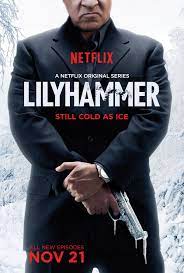
And finally something fun for Netflix subscribers who will be able to access all parts of the Lilyhammer series which was originally produced by the Norwegian public broadcaster NRK. While TV, even in the original language, is not always suited for beginners of a language, ‘Lilyhammer’ with its naturally bi-lingual dialogue and unconventional subject matter still might be worth a shot. The series about a former New York gangster sent to provincial Norway in a witness protection program provides not only a hilarious insight into Norwegian life and humour, but also deals with language barriers as well as cultural discrepancies and how to overcome them. At the heart of it all is also one man’s journey over time to learn Norwegian from scratch!
Now You’re Ready To Start Learning Norwegian!

That’s a wrap! That’s everything you need to know about starting to learn Norwegian.
It’s true that Norwegian is simple in some ways and difficult in others. But with the right attitude, tools, and amount of effort, I’m confident that with time, you’ll be able to communicate fluently.
Since everyone is unique and has a different set of goals or has a different approach to learning, the most important thing as you embark on this journey is to know what works best for you when learning Norwegian.
So if some of the resources don’t seem to fit your learning style, that’s totally fine! Just focus on what’s working well for you.
Make sure to dedicate some time everyday to study and practice, even if it’s as simple as watching a short video in Norwegian, jotting down a couple of sentences, or practicing speaking out loud in front of a mirror. The most important thing is that you stay consistent and stick with it.
And most importantly, be patient. Norwegian, even, if it's one of the easier language for English speakers to master, does take some time to learn, and it’s totally okay to make mistakes.
If a new grammar rule is overwhelming you, then give yourself a break by practicing other skills that boost your confidence before returning back to the challenge at hand.
I hope you’ve been able to get some helpful tips from this guide to help you as you learn Norwegian.
If you have a friend learning Norwegian, please take a moment to share this post with them, it would mean a lot to me!
Recommended Articles


